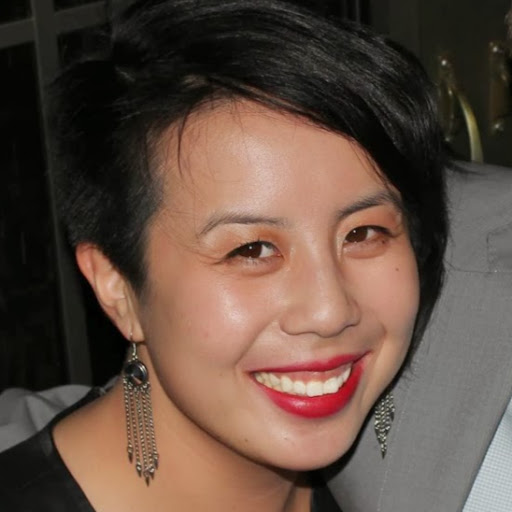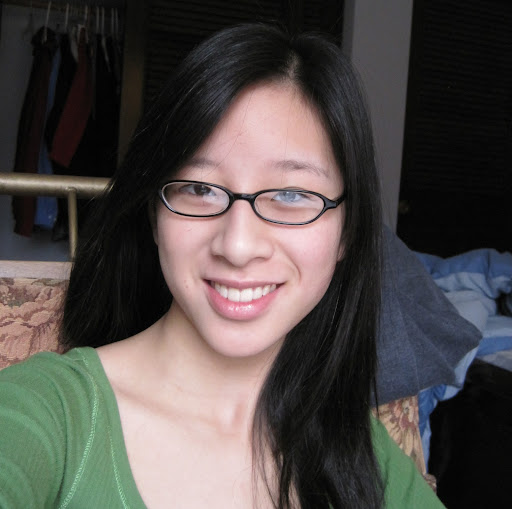Christine Wang
age ~41
from Alhambra, CA
Christine Wang Phones & Addresses
- 688 N Atlantic Blvd UNIT A, Alhambra, CA 91801
- Pasadena, CA
- West Palm Beach, FL
- Gainesville, FL
- Waltham, MA
- Lake Worth, FL
- Alexandria, VA
- 550 Okeechobee Blvd APT 1012, West Palm Beach, FL 33401
Education
-
Degree:High school graduate or higher
Medicine Doctors

Dr. Christine Wang, Cambridge MA - MD (Doctor of Medicine)
view sourceSpecialties:
Internal Medicine
Age:
42
Address:
330 Mount Auburn St Suite 438, Cambridge, MA 02138
(617)4995112 (Phone)
(617)4995112 (Phone)
Languages:
English
Hospitals:
330 Mount Auburn St Suite 438, Cambridge, MA 02138
Miriam Hospital
164 Summit Avenue, Providence, RI 02906
Rhode Island Hospital
593 Eddy Street, Providence, RI 02903
Miriam Hospital
164 Summit Avenue, Providence, RI 02906
Rhode Island Hospital
593 Eddy Street, Providence, RI 02903
Education:
Medical School
New York Medical College
Graduated: 2010
New York Medical College
Graduated: 2010

Dr. Christine A Wang, Cambridge MA - DO (Doctor of Osteopathic Medicine)
view sourceSpecialties:
Family Medicine
Age:
42
Address:
330 Mount Auburn St, Cambridge, MA 02138
VETERANS CLINIC
275 Nichols Rd, Fitchburg, MA 01420
(781)6874878 (Phone)
VETERANS CLINIC
275 Nichols Rd, Fitchburg, MA 01420
(781)6874878 (Phone)
Languages:
English

Christine S Wang, Lynwood CA - NP (Nurse practitioner)
view sourceSpecialties:
Nursing (Nurse Practitioner)
Address:
11705 Alameda St, Lynwood, CA 90262
(323)5684711 (Phone)
(323)5684711 (Phone)
Languages:
English

Christine T. Wang
view sourceSpecialties:
Pediatrics, Adolescent Medicine
Work:
Soho Pediatric Group
552 Broadway STE 5N, New York, NY 10012
(212)3343366 (phone), (212)3343981 (fax)
552 Broadway STE 5N, New York, NY 10012
(212)3343366 (phone), (212)3343981 (fax)
Education:
Medical School
SUNY Downstate Medical Center College of Medicine
Graduated: 2001
SUNY Downstate Medical Center College of Medicine
Graduated: 2001
Procedures:
Destruction of Benign/Premalignant Skin Lesions
Hearing Evaluation
Psychological and Neuropsychological Tests
Vaccine Administration
Hearing Evaluation
Psychological and Neuropsychological Tests
Vaccine Administration
Conditions:
Acute Conjunctivitis
Acute Pharyngitis
Acute Upper Respiratory Tract Infections
Atopic Dermatitis
Inguinal Hernia
Acute Pharyngitis
Acute Upper Respiratory Tract Infections
Atopic Dermatitis
Inguinal Hernia
Languages:
English
Spanish
Spanish
Description:
Dr. Wang graduated from the SUNY Downstate Medical Center College of Medicine in 2001. She works in New York, NY and specializes in Pediatrics and Adolescent Medicine.

Christine M. Wang
view sourceSpecialties:
Internal Medicine
Work:
Scripps ClinicScripps Clinic Carmel Valley
3811 Vly Ctr Dr, San Diego, CA 92130
(858)7643000 (phone), (858)7643025 (fax)
3811 Vly Ctr Dr, San Diego, CA 92130
(858)7643000 (phone), (858)7643025 (fax)
Education:
Medical School
Albany Medical College
Graduated: 2003
Albany Medical College
Graduated: 2003
Procedures:
Arthrocentesis
Destruction of Benign/Premalignant Skin Lesions
Electrocardiogram (EKG or ECG)
Vaccine Administration
Destruction of Benign/Premalignant Skin Lesions
Electrocardiogram (EKG or ECG)
Vaccine Administration
Conditions:
Abnormal Vaginal Bleeding
Acute Bronchitis
Acute Conjunctivitis
Acute Pharyngitis
Acute Sinusitis
Acute Bronchitis
Acute Conjunctivitis
Acute Pharyngitis
Acute Sinusitis
Languages:
English
Spanish
Spanish
Description:
Dr. Wang graduated from the Albany Medical College in 2003. She works in San Diego, CA and specializes in Internal Medicine. Dr. Wang is affiliated with Scripps Green Hospital, Scripps Memorial Hospital Encinitas, Scripps Memorial Hospital La Jolla and Scripps Mercy Hospital.
Real Estate Brokers

Christine Wang, La Crescenta CA Agent
view sourceWork:
Coldwell Banker
La Crescenta, CA
(818)2495222 (Phone)
La Crescenta, CA
(818)2495222 (Phone)
Resumes

Christine Wang Alhambra, CA
view sourceWork:
Miss Me, Sweet People Apparel, Inc
Feb 2014 to 2000
Administrative Assistant in Non-denim Production Arc Animal Hospital
Rowland Heights, CA
Jul 2012 to Apr 2014
Veterinary Receptionist and Assistant New York Stock Exchange
Nov 2008 to Sep 2012
Associate Feihe Int'l, Inc
Los Angeles, CA
Dec 2006 to Nov 2008
Personal Assistant to Senior Vice President
Feb 2014 to 2000
Administrative Assistant in Non-denim Production Arc Animal Hospital
Rowland Heights, CA
Jul 2012 to Apr 2014
Veterinary Receptionist and Assistant New York Stock Exchange
Nov 2008 to Sep 2012
Associate Feihe Int'l, Inc
Los Angeles, CA
Dec 2006 to Nov 2008
Personal Assistant to Senior Vice President
Education:
National Taiwan Normal University
May 2011
Chinese University of California
Los Angeles, CA
Sep 2010
Bachelor of Arts in English Taipei American School
Jun 2006
High School Diploma
May 2011
Chinese University of California
Los Angeles, CA
Sep 2010
Bachelor of Arts in English Taipei American School
Jun 2006
High School Diploma
Skills:
Microsoft Office Suite, Adobe Photoshop and Reader
Name / Title
Company / Classification
Phones & Addresses
Keller Williams Vip Properties
Real Estate Agents and Managers
Real Estate Agents and Managers
25124 Springfield Ct, Santa Clarita, CA 91355
CTO
University of California
Colleges, Universities, and Professional Scho...
Colleges, Universities, and Professional Scho...
341 Haines Hall # 951553, Los Angeles, CA 90095
President
AEROMAR.COM INC
Nonclassifiable Establishments
Nonclassifiable Establishments
1930 S Brea Cyn Rd STE 130, Diamond Bar, CA 91765
Manager
at&T Services, Inc
Management Services · Telephone Communications Misc Publishing Direct Mail Ad Svcs Radiotelephone Commun · Labor Relations Department
Management Services · Telephone Communications Misc Publishing Direct Mail Ad Svcs Radiotelephone Commun · Labor Relations Department
1010 Wilshire Blvd, Los Angeles, CA 90017
(213)9756720, (213)9754089, (213)9753747
(213)9756720, (213)9754089, (213)9753747
Marketing Staff
Jarboe Enterprise
Mortgage · Security Broker/Dealer
Mortgage · Security Broker/Dealer
2040 S Brea Cyn Rd, Pomona, CA 91765
20401 Vly Blvd, Walnut, CA 91789
(909)8696588
20401 Vly Blvd, Walnut, CA 91789
(909)8696588
Twh Enterprises, LLC
15576 Lujon St, Whittier, CA 91745
NEW STAR JEWELRY LLC
Keller Williams Vip Properties
25124 Springfield Ct, Valencia, CA 91355
(661)2903700
(661)2903700
License Records
Christine M. Wang Gilbert
License #:
L1-0035925 - Active
Category:
Nursing
Type:
Registered Nurse
Christine Warren Wang
License #:
044646-21 - Expired
Category:
Nursing
Type:
Registered Nurse
Christine M. Wang Gilbert
License #:
L1-0035925 - Active
Category:
Nursing
Type:
Registered Nurse
Isbn (Books And Publications)


Lawyers & Attorneys
Us Patents
-
Semiconductor Substrate Bonding By Mass Transport Growth Fusion
view source -
US Patent:20030037874, Feb 27, 2003
-
Filed:Jul 26, 2002
-
Appl. No.:10/205704
-
Inventors:Christine Wang - Bedford MA, US
-
Assignee:Massachusetts Institute of Technology - Cambridge MA
-
International Classification:C09J001/00
B32B031/00
C09J005/00 -
US Classification:156/306300, 156/281000
-
Abstract:In bonding a first crystalline semiconductor substrate to a second crystalline semiconductor substrate, a liquid is applied to a first surface of the first substrate and to a first surface of the second substrate to wet both substrate first surfaces. The first surface of the first substrate is brought together with the first surface of the second substrate while the liquid substantially remains on both first surfaces, and then the liquid is evaporated from the substrate first surfaces, while the substrate first faces are together, at an evaporation temperature that is below the boiling point of the liquid at ambient pressure. The substrates are then heat treated at a temperature above the evaporation temperature. Surface channels can be formed in a first surface of at least one of the first and second substrates, and during the heat treatment, a crystal growth promotion vapor can be supplied to the substrates.
-
Photonic Integrated Circuits Based On Quantum Cascade Structures
view source -
US Patent:20140027708, Jan 30, 2014
-
Filed:Jul 25, 2013
-
Appl. No.:13/951240
-
Inventors:Christian Pfluegl - Medford MA, US
Christine A. Wang - Bedford MA, US
Mark Francis Witinski - Cambridge MA, US -
Assignee:EOS Photonics, Inc. - Cambridge MA
Massachusetts Institute of Technology - Cambridge MA -
International Classification:H01L 29/15
-
US Classification:257 9, 438478
-
Abstract:Photonic integrated circuits (PICs) are based on quantum cascade (QC) structures. In embodiment methods and corresponding devices, a QC layer in a wave confinement region of an integrated multi-layer semiconductor structure capable of producing optical gain is depleted of free charge carriers to create a low-loss optical wave confinement region in a portion of the structure. Ion implantation may be used to create energetically deep trap levels to trap free charge carriers. Other embodiments include modifying a region of a passive, depleted QC structure to produce an active region capable of optical gain. Gain or loss may also be modified by partially depleting or enhancing free charge carrier density. QC lasers and amplifiers may be integrated monolithically with each other or with passive waveguides and other passive devices in a self-aligned manner. Embodiments overcome challenges of high cost, complex fabrication, and coupling loss involved with material re-growth methods.
-
Reliable Alingaas/Algaas Strained-Layer Diode Lasers
view source -
US Patent:52166848, Jun 1, 1993
-
Filed:Sep 7, 1990
-
Appl. No.:7/579347
-
Inventors:Christine A. Wang - Bedford MA
James N. Walpole - Concord MA
Hong K. Choi - Concord MA
Joseph P. Donnelly - Carlisle MA -
Assignee:Massachusetts Institute of Technology - Cambridge MA
-
International Classification:H01S 319
-
US Classification:372 45
-
Abstract:A strained quantum-well diode laser with an AlInGaAs active layer and AlGaAs cladding and/or confining layers on a GaAs substrate is provided. AlInGaAs/AlGaAs lasers can be configured in laser geometries including ridge, waveguide, buried heterostructure, oxide-defined, proton-defined, narrow-stripe, broad-stripe, coupled-stripe and linear arrays using any epitaxial growth technique. Broad-stripe devices were fabricated in graded-index separate confinement heterostructures, grown by organometallic vapor phase epitaxy on GaAs substrates, containing a single Al. sub. y In. sub. x Ga. sub. l-x-y As quantum well with x between 0. 14 and 0. 12 and y between 0. 05 and 0. 17. With increasing Al content, emission wavelengths from 890 to 785 nm were obtained. Threshold current densities, J. sub. th 's, less than 200 A cm. sup.
-
Two-Dimensional Surface-Emitting Laser Array
view source -
US Patent:49568442, Sep 11, 1990
-
Filed:Mar 17, 1989
-
Appl. No.:7/325292
-
Inventors:William D. Goodhue - Chelmsford MA
Kurt Rauschenbach - Marlboro MA
Christine A. Wang - Bedford MA -
Assignee:Massachusetts Institute of Technology - Cambridge MA
-
International Classification:H01S 300
-
US Classification:372 44
-
Abstract:An improved two-dimensional semiconductor surface-emitting laser array is described in which two intra-cavity internal reflecting surfaces are formed at a 45. degree. angle to the plane of the active layer of the semiconductor laser so as to internally reflect light from each end of the active layer in a direction normal to the plane of the active layer with a buried reflective mirror provided in the path of one of said reflections, so as to transmit reflected light back through the laser and out the top surface of the array.
-
Vapor Phase Reactor For Making Multilayer Structures
view source -
US Patent:49976770, Mar 5, 1991
-
Filed:Aug 31, 1987
-
Appl. No.:7/091268
-
Inventors:Christine A. Wang - Bedford MA
Robert A. Brown - Winchester MA
James W. Caunt - Concord MA -
Assignee:Massachusetts Institute of Technology - Cambridge MA
-
International Classification:C23C 1600
-
US Classification:4272481
-
Abstract:A gaseous mixture is introduced through a radial inlet into a plenum-like antichamber above a porous diaphragm mounted across the top of a reactor vessel of substantially uniform width. The antichamber and diaphragm are substantially coextensive with the width of the vessel. The diaphragm may form part of a removable cover/diaphragm unit received in a collar-like ring. The substrate holder includes a molybdenum cap and base which fits over a pedestal of refractory material carrying a temperature sensor with an electrical lead extending down the hollow core of a rotatable reactor The Government has rights in this invention pursuant to Contract Number F19628-85-C-0002 awarded by the Department of the Air Force.
-
Tapered Semiconductor Laser Gain Structure With Cavity Spoiling Grooves
view source -
US Patent:52608220, Nov 9, 1993
-
Filed:Jan 31, 1992
-
Appl. No.:7/829778
-
Inventors:Leo J. Missaggia - Milford MA
Christine A. Wang - Bedford MA
Stephen R. Chinn - Westford MA
Emily S. Kintzer - Arlington MA
James N. Walpole - Concord MA -
Assignee:Massachusetts Institute of Technology - Cambridge MA
-
International Classification:H01S 319
H01L 3300 -
US Classification:359337
-
Abstract:A semiconductor laser gain structure having a tapered gain region comprising cavity spoilers for receiving light which is reflected off of the output facet back into the semiconductor and removing it from the gain region so as to reduce or eliminate self oscillation. The boundaries of the gain region are also designed to have a very low refractive index gradient so as to minimize reflection of light off of the boundaries back into the gain region. The gain structure may be embodied in a semiconductor laser oscillator or semiconductor laser amplifier depending on whether the input facet is or is not, respectively, anti reflection coated. The output facet is anti-reflection coated in either embodiment.
-
Tapered Semiconductor Laser Oscillator
view source -
US Patent:55555446, Sep 10, 1996
-
Filed:Apr 4, 1994
-
Appl. No.:8/222413
-
Inventors:James N. Walpole - Concord MA
Emily S. Kintzer - Arlington MA
Stephen R. Chinn - Westford MA
Christine A. Wang - Bedford MA
Lee J. Missaggia - Milford MA -
Assignee:Massachusetts Institute of Technology - Cambridge MA
-
International Classification:H01S 318
-
US Classification:372 50
-
Abstract:A semiconductor laser oscillator structure and method is described having a tapered gain region in one-half of a laser cavity and a confocal oscillator region in another half of the cavity. An aperture is formed between two pairs of cavity spoilers located between the two cavity halves. One pair of spoilers is provided for receiving light which is reflected off of an output facet back into the semiconductor and removing it from the gain region. The other pair of spoilers removes light reflected from a curved mirror surface formed at the end of the other laser cavity half.
-
Tapered Semiconductor Laser Gain Structure With Cavity Spoiling Grooves
view source -
US Patent:54003539, Mar 21, 1995
-
Filed:Nov 8, 1993
-
Appl. No.:8/148386
-
Inventors:James N. Walpole - Concord MA
Emily S. Kintzer - Arlington MA
Stephen R. Chinn - Westford MA
Christine A. Wang - Bedford MA
Leo J. Missaggia - Milford MA -
Assignee:Massachusetts Institute of Technology - Cambridge MA
-
International Classification:H01S 319
-
US Classification:372 46
-
Abstract:A semiconductor laser gain structure having a tapered gain region comprising cavity spoilers for receiving light which is reflected off of the output facet back into the semiconductor and removing it from the gain region so as to reduce or eliminate self-oscillation. The boundaries of the gain region are also designed to have a very low refractive index gradient so as to minimize reflection of light off of the boundaries back into the gain region. The gain structure may be embodied in a semiconductor laser oscillator or semiconductor laser amplifier depending on whether the input facet is or is not, respectively, anti-reflection coated. The output facet is anti-reflection coated in either embodiment.

Christine Lifei Wang
view source
Jimmy Christine Wang
view source
Christine Christine Wang
view source
Christine Isabel Wang
view source
Christine Wang
view source
Christine Wang
view source
Christine Wang
view source
Christine Wang
view sourceMyspace
Youtube
Flickr
Classmates

Christine Wang
view sourceSchools:
Singapore American High School Singapore AK 1998-2002
Community:
Jill Nelson, Ruth Blight, Jessie Constantino

Christine Wang
view sourceSchools:
university of AB Edmonton Azores 2001-2005
Community:
Leslie Armstrong, Paul Gutowski, John Paterson

Christine Wang
view sourceSchools:
Flintridge Preparatory School La Canada Flintridge CA 1997-2001
Community:
Dennis Mccarthy, Chip Jacobs

Christine Yao (Wang)
view sourceSchools:
Hartford Central School Hartford NY 1990-1994
Community:
Joyce Carlton, Melvin Pauquette

Christine Wang
view sourceSchools:
Great Neck North Senior High School Great Neck NY 1981-1985
Community:
Lisa Klahr, Bill Vozios

Christine Christine Wang ...
view sourceSchools:
Northbrook High School Northbrook IL 1965-1969
Community:
Rita Kilcoyne, Ann Kelly, Margo Stults, Jay Arbetman, Howard Mack, Kathy Klotz, Julie Henke, Bill Abell, Connie Tallman, Virginia Leider, Steve Kammann

Christine Wang
view sourceSchools:
Blythebourne Public School 105 Brooklyn NY 1983-1985, St. Frances De Chantal School Brooklyn NY 1983-1990
Community:
Sue Schoenfeld, Leon Klein, Richard Levine, Linda Berkeley, Mike Meachem

Blythebourne Public Schoo...
view sourceGraduates:
Christine Wang (1983-1985),
Rosemary Cappillo (1960-1960),
Steven Marrero (1991-1997),
Jason Rios (1990-1996),
Christine Grant (1960-1966)
Rosemary Cappillo (1960-1960),
Steven Marrero (1991-1997),
Jason Rios (1990-1996),
Christine Grant (1960-1966)
Plaxo

christine wang
view sourcepostdoc at Academia Sinica

christine wang
view source
Christine Wang
view sourceThe Netherlands
Googleplus

Christine Wang
Work:
Princeton University Dining Services - Captain (2010)
The Bishop's School - Strength & Conditioning Intern (2010-2011)
Kogeto - Summer Intern (2012-2012)
The Bishop's School - Strength & Conditioning Intern (2010-2011)
Kogeto - Summer Intern (2012-2012)
Education:
Princeton University
Tagline:
Dancer, writer, student.

Christine Wang
Work:
YouTube - Partner Program Account Manager (2011)
Google - HR Business Partner (2010-2011)
Google - AdWords Account Manager (2008-2010)
Google - HR Business Partner (2010-2011)
Google - AdWords Account Manager (2008-2010)
Education:
Claremont McKenna College - Government & Psychology

Christine Wang
Work:
PepsiCo
Education:
University of Florida - Food Science
Relationship:
Engaged

Christine Wang
Education:
University of Illinois at Chicago - Doctor of Medicine, University of Chicago - Biological Sciences

Christine Wang
Education:
Naperville North High School

Christine Wang
Work:
Riot Games - Lead Champion Designer
Education:
Harvard University

Christine Wang
Education:
CCSF

Christine Wang
Education:
North Sydney Girls
News

China scrambles to reassure jittery stock traders after market plunge
view source- "This week, from Monday, I thought I was going to fall apart, because I lost 35 per cent of all my investments," said Christine Wang, 30, an office worker in Shanghai. "But I think that I should make it back."
- Date: Jul 01, 2015
- Category: Business
- Source: Google

Lenovo Profit Rises 13% as Share Overtakes Hewlett-Packard
view source- Were positive on their development in smartphones,Christine Wang, a Taipei-based analyst at Daiwa Capital Markets,said by phone today. Lenovo will outperform the PC industry,but its still slowing down. So if the company can deliverperformance on the smartphone side, that is pretty good.
- Date: Nov 08, 2012
- Category: Business
- Source: Google

Lenovo Forges Ties With EMC to Increase Storage Revenue
view source- We think Lenovo will copy Dells success in the serverbusiness, so this is positive in the long term, said Christine Wang, a Taipei-based analyst at Daiwa Capital Markets. This isgood for both sides. Lenovo will gain sever capability andexpand its server business in China. EMC will expand stor
- Date: Aug 01, 2012
- Category: Sci/Tech
- Source: Google

A birth control gel for men lowers sperm count sharply
view source- A team headed by Dr. Christine Wang of the Los Angeles Biomedical Research Institute at Harbor-UCLA Medical Center enrolled 99 men in a preliminary study of the drug combination. A third of them received a gel containing testosterone and a placebo, which they applied daily for six months. The rest r
- Date: Jun 26, 2012
- Category: Health
- Source: Google
Get Report for Christine Wang from Alhambra, CA, age ~41
















